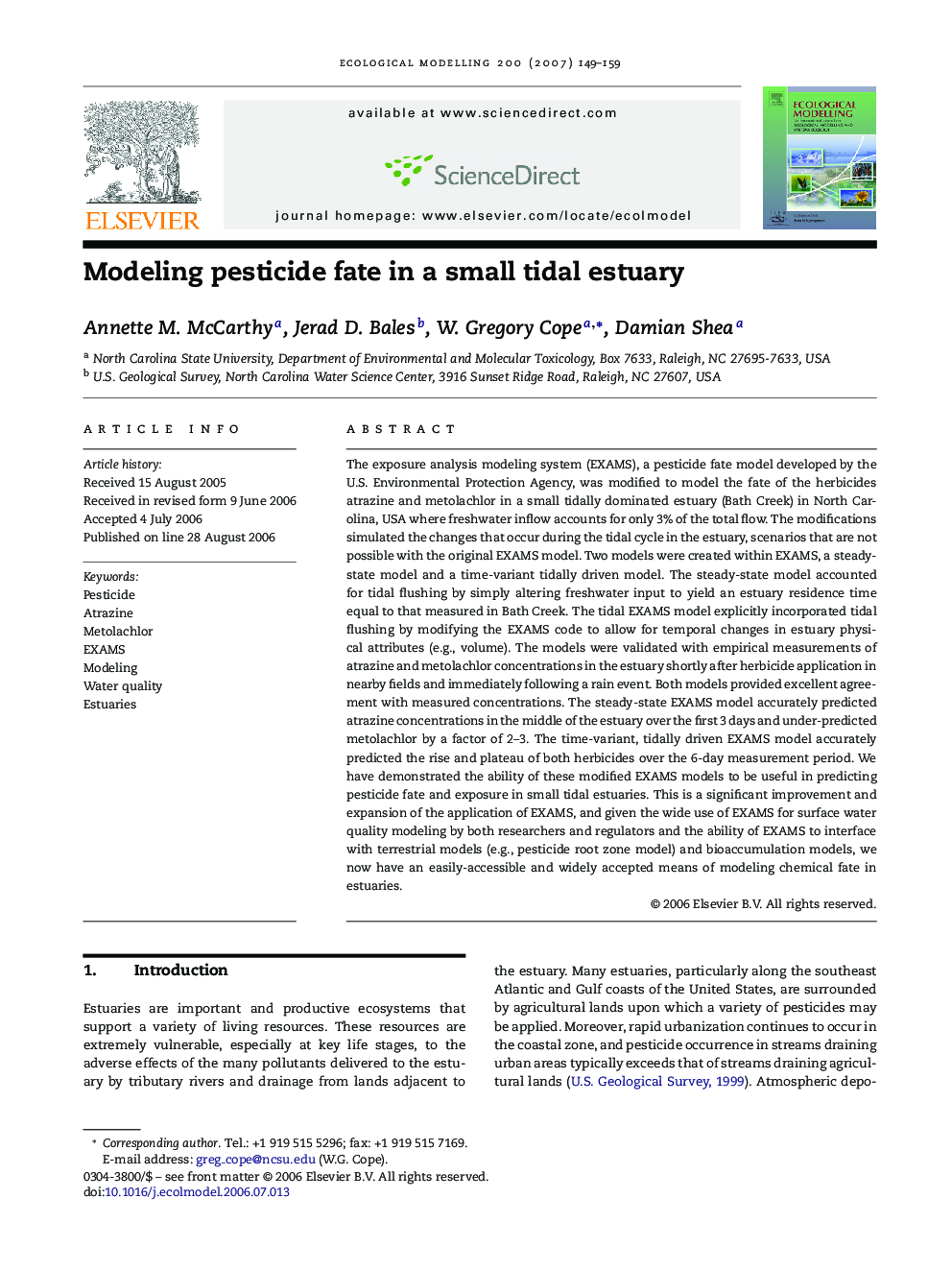| کد مقاله | کد نشریه | سال انتشار | مقاله انگلیسی | نسخه تمام متن |
|---|---|---|---|---|
| 4378872 | 1617556 | 2007 | 11 صفحه PDF | دانلود رایگان |

The exposure analysis modeling system (EXAMS), a pesticide fate model developed by the U.S. Environmental Protection Agency, was modified to model the fate of the herbicides atrazine and metolachlor in a small tidally dominated estuary (Bath Creek) in North Carolina, USA where freshwater inflow accounts for only 3% of the total flow. The modifications simulated the changes that occur during the tidal cycle in the estuary, scenarios that are not possible with the original EXAMS model. Two models were created within EXAMS, a steady-state model and a time-variant tidally driven model. The steady-state model accounted for tidal flushing by simply altering freshwater input to yield an estuary residence time equal to that measured in Bath Creek. The tidal EXAMS model explicitly incorporated tidal flushing by modifying the EXAMS code to allow for temporal changes in estuary physical attributes (e.g., volume). The models were validated with empirical measurements of atrazine and metolachlor concentrations in the estuary shortly after herbicide application in nearby fields and immediately following a rain event. Both models provided excellent agreement with measured concentrations. The steady-state EXAMS model accurately predicted atrazine concentrations in the middle of the estuary over the first 3 days and under-predicted metolachlor by a factor of 2–3. The time-variant, tidally driven EXAMS model accurately predicted the rise and plateau of both herbicides over the 6-day measurement period. We have demonstrated the ability of these modified EXAMS models to be useful in predicting pesticide fate and exposure in small tidal estuaries. This is a significant improvement and expansion of the application of EXAMS, and given the wide use of EXAMS for surface water quality modeling by both researchers and regulators and the ability of EXAMS to interface with terrestrial models (e.g., pesticide root zone model) and bioaccumulation models, we now have an easily-accessible and widely accepted means of modeling chemical fate in estuaries.
Journal: Ecological Modelling - Volume 200, Issues 1–2, 10 January 2007, Pages 149–159